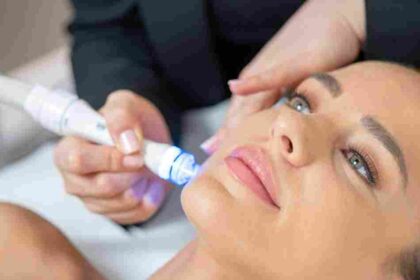Rhinoplasty is a transformative procedure that reshapes the nose to improve aesthetics, function, or both. While the surgery itself is a critical step, the recovery phase is equally important for achieving the best possible results. Rhinoplasty in Abu Dhabi offers patients not only advanced surgical techniques but also expert guidance on post-operative care that supports smooth healing and optimal outcomes. This article offers essential advice on rhinoplasty recovery to help patients navigate the healing process confidently.
Understanding the Recovery Process After Rhinoplasty
Recovery from rhinoplasty is a gradual journey that varies from person to person depending on the extent of surgery, individual healing capacity, and adherence to care instructions. Typically, the initial phase involves managing swelling, bruising, and discomfort, followed by tissue settling and remodeling over several months.
Most patients notice significant improvements within the first two weeks, allowing a return to routine activities. However, subtle swelling and changes in nasal shape can persist for up to a year as the tissues fully heal and refine.
Immediate Post-Operative Care
The first few days after surgery are crucial for minimizing complications and promoting healing. Key advice includes:
-
Resting with the head elevated to reduce swelling and facilitate drainage.
-
Applying cold compresses around the eyes (not directly on the nose) to manage bruising.
-
Avoiding strenuous activities, bending over, or heavy lifting that may increase blood pressure and swelling.
-
Following prescribed medication schedules to control pain and prevent infection.
-
Keeping nasal dressings, splints, or packing intact as directed by the surgeon.

The Phases of Rhinoplasty Healing
Healing can generally be divided into phases:
Immediate Recovery (First Week)
This is when swelling, bruising, and tenderness peak. Nasal splints or packing might be present to protect the nose and stabilize newly shaped tissues.
Early Healing (Weeks 2-4)
Swelling begins to diminish, and bruising fades. Splints are typically removed during this period. Patients start resuming light activities and experience noticeable improvements.
Intermediate Healing (1-3 Months)
The majority of swelling subsides, and the nose starts taking on its new shape more clearly. Some residual puffiness, especially at the tip, can linger.
Long-Term Refinement (6-12 Months)
Subtle tissue remodeling and scar maturation continue, and the nose fully settles into its final form.
Understanding these phases helps patients set realistic expectations and appreciate the gradual nature of recovery.
Managing Swelling and Bruising
Swelling and bruising are natural parts of the healing process. While some degree of discoloration around the eyes and nose is expected, it typically fades within 10 to 14 days. Patience and proper care can speed this phase:
-
Avoid excessive sun exposure, which can worsen swelling and discoloration.
-
Maintain a balanced diet rich in vitamins and antioxidants to support tissue repair.
-
Stay hydrated and avoid salty foods that may cause fluid retention.
-
Avoid smoking and alcohol, as they impair circulation and delay healing.
Activity and Lifestyle Recommendations
During recovery, lifestyle adjustments are important to protect the surgical site and encourage healing:
-
Resume light activities gradually but avoid high-impact sports or contact activities for several weeks.
-
Sleep on your back with your head elevated to prevent pressure on the nose.
-
Avoid wearing glasses that rest on the bridge of the nose until cleared by the surgeon.
-
Refrain from blowing your nose forcefully or sneezing with the mouth closed to avoid stress on nasal tissues.
Follow-Up and Monitoring
Regular follow-up visits are essential for monitoring healing progress and addressing any concerns promptly. Surgeons in Abu Dhabi typically schedule appointments shortly after surgery and at intervals over the following months to:
-
Remove splints or sutures when appropriate.
-
Assess swelling reduction and tissue healing.
-
Provide guidance on gradual return to normal activities.
-
Detect and manage any unexpected complications early.
When to Seek Medical Attention
Although complications are rare with proper care, it’s important to recognize warning signs that warrant immediate medical evaluation:
-
Excessive bleeding or persistent nasal discharge with unusual color or odor.
-
Severe pain not relieved by medication.
-
Signs of infection such as fever, redness, or warmth around the surgical site.
-
Difficulty breathing through the nose that worsens over time.
Prompt communication with your healthcare provider ensures safe and effective recovery.
Frequently Asked Questions (FAQs)
How long before I can return to work or social activities?
Most patients resume work and light social activities within one to two weeks, depending on the nature of their job and personal healing speed.
Is it normal to have numbness or altered sensation?
Temporary numbness or tingling around the nose and upper lip is common and typically resolves over weeks to months.
Can I wear makeup during recovery?
Makeup should be avoided for at least two weeks or until any bruising and swelling significantly diminish to avoid irritation.
When can I resume exercise and strenuous activities?
Light exercise may resume after about two to three weeks, but contact sports or heavy lifting should be avoided for at least six weeks.
Conclusion
Rhinoplasty recovery in Abu Dhabi benefits greatly from expert guidance, meticulous care, and patient commitment to post-operative instructions. Understanding the healing timeline, managing swelling, and adopting appropriate lifestyle modifications are key to achieving a beautiful and lasting result.

